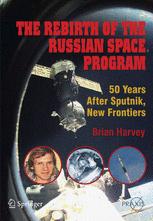

Most ebook files are in PDF format, so you can easily read them using various software such as Foxit Reader or directly on the Google Chrome browser.
Some ebook files are released by publishers in other formats such as .awz, .mobi, .epub, .fb2, etc. You may need to install specific software to read these formats on mobile/PC, such as Calibre.
Please read the tutorial at this link: https://ebookbell.com/faq
We offer FREE conversion to the popular formats you request; however, this may take some time. Therefore, right after payment, please email us, and we will try to provide the service as quickly as possible.
For some exceptional file formats or broken links (if any), please refrain from opening any disputes. Instead, email us first, and we will try to assist within a maximum of 6 hours.
EbookBell Team

5.0
68 reviewsThe rebirth of the Russian space program marks an important event: 50 years since the first Sputnik was launched on 4th October 1957. At that time, few could have imagined the dramatic events that lay head. The Soviet Union achieved all the great firsts in cosmonautics—the first satellite in orbit, the first animal in orbit, the first laboratory in orbit, the first probe to the Moon, the first probe to photograph its far side, the first soft landing on the moon, the first man in space, the first woman in space, the first spacewalk. Except one, the first human landing on the Moon. In 1964, the Soviet Union decided to contest the decision of the United States to put the first person on the Moon. The Soviet Union engaged in that race far too late, with divided organization, and made a gallant but doomed challenge to Apollo. Undaunted, the Soviet Union rebuilt its space program around orbiting stations, building the first one, Salyut, and then the first permanent home in space, Mir. The Soviet Union still achieved many more firsts: the first lunar rover, the first soft landing on Venus, the first soft landing on Mars, the first recovery of samples from the Moon by automatic spacecraft.